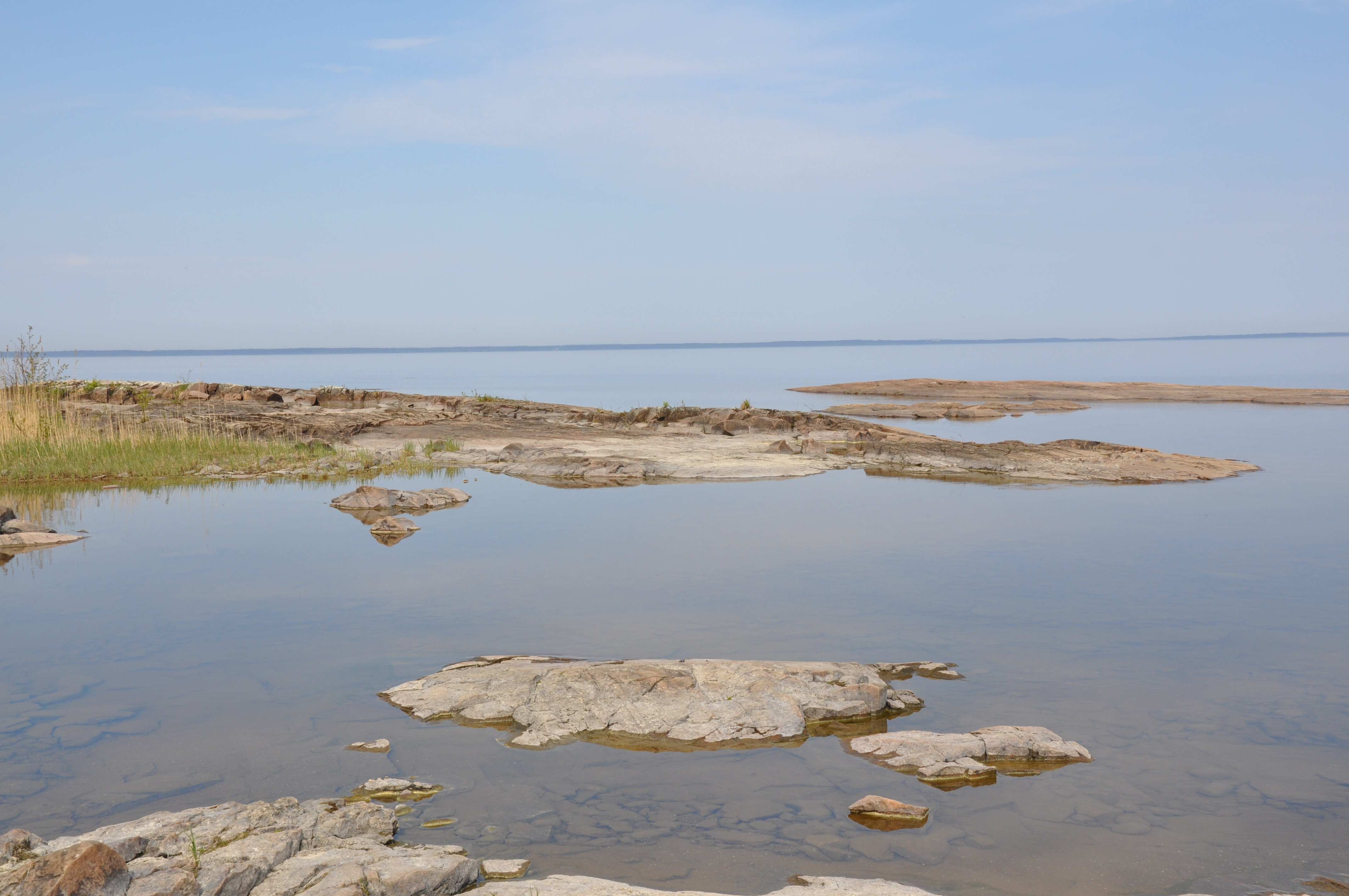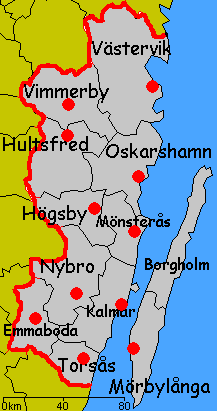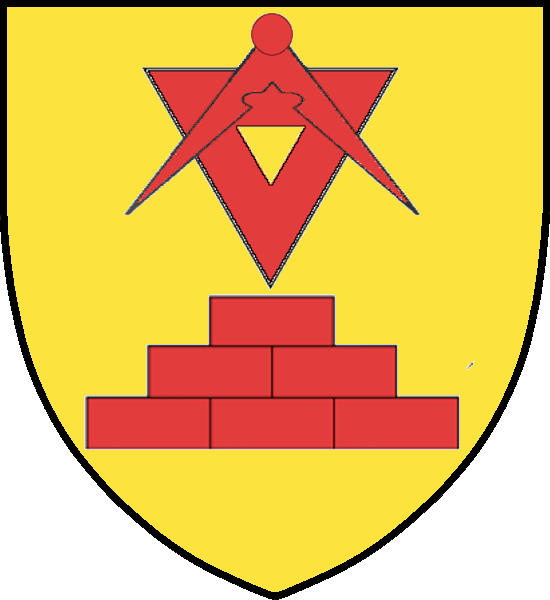|
Blå Jungfrun
Blå Jungfrun, also known as "Blåkulla", in English sometimes rendered literally as The Blue Maiden is a Swedish island in the Baltic Sea. It is situated in the Kalmar Strait, between the mainland province of Småland and the island province of Öland. Administratively, the uninhabited island is part of the municipality of Oskarshamn and covers an area of approximately with a mean height above sea level of . Home to black guillemots and a Swedish National Park since 1926, freedom to roam at Blå Jungfrun is limited with visitors prohibited from staying overnight on the island or making fires. The island consists partly of bare rock with the remainder covered in dense hardwood forest. There are several caves and an ancient stone labyrinth from which it is forbidden to remove stones. Geologically the island is an ancient inselberg rising from the Sub-Cambrian peneplain. After its formation in the Precambrian, Blå Jungfrun was buried in sandstone, which protected it from any fu ... [...More Info...] [...Related Items...] OR: [Wikipedia] [Google] [Baidu] |
Sub-Cambrian Peneplain
The sub-Cambrian peneplain is an ancient, extremely flat, erosion surface (peneplain) that has been exhumed and exposed by erosion from under Cambrian strata over large swathes of Fennoscandia. Eastward, where this peneplain dips below Cambrian and other Lower Paleozoic cover rocks. The exposed parts of this peneplain are extraordinarily flat with relief of less than 20 m. The overlying cover rocks demonstrate that the peneplain was flooded by shallow seas during the Early Paleozoic. Being the oldest identifiable peneplain in its area the Sub-Cambrian peneplain qualifies as a primary peneplain. The surface was first identified by Arvid Högbom in a 1910 publication, with Sten Rudberg publishing the first extensive map in 1954. This mapping has been improved upon by Karna Lidmar-Bergström since the 1980s. Extent The Sub-Cambrian peneplain extends as an almost continuous belt along the eastern coast of Sweden for some 700 km from north to south. Near Stockholm and Hudiksvall the ... [...More Info...] [...Related Items...] OR: [Wikipedia] [Google] [Baidu] |
Kalmar County
Kalmar County () is a county or '' län'' in southern Sweden. It borders the counties of Kronoberg, Jönköping, Blekinge and Östergötland. To the east in the Baltic Sea is the island Gotland. The counties are mainly administrative units. Geographically Kalmar County covers the eastern part in the Småland province, and the entire island of Öland. Culture Much of Öland's present day landscape known as the Stora Alvaret has been designated as a World Heritage Site by UNESCO. This southern part of Öland is known for a large number of rare species; early paleolithic settlement at Alby; other prehistoric remains such as the Gettlinge Gravefield and Eketorp Fortress; and the Ottenby Nature Preserve. Administration Kalmar County was integrated with Kronoberg County until 1672. Blekinge was a part of Kalmar County between 1680 and 1683, due to the foundation of the naval base at Karlskrona. The seat of residence for the Governor or ''Landshövding'' is Kalmar. The Govern ... [...More Info...] [...Related Items...] OR: [Wikipedia] [Google] [Baidu] |
Quartz
Quartz is a hard, crystalline mineral composed of silica (silicon dioxide). The atoms are linked in a continuous framework of SiO4 silicon-oxygen tetrahedra, with each oxygen being shared between two tetrahedra, giving an overall chemical formula of SiO2. Quartz is the second most abundant mineral in Earth's continental crust, behind feldspar. Quartz exists in two forms, the normal α-quartz and the high-temperature β-quartz, both of which are chiral. The transformation from α-quartz to β-quartz takes place abruptly at . Since the transformation is accompanied by a significant change in volume, it can easily induce microfracturing of ceramics or rocks passing through this temperature threshold. There are many different varieties of quartz, several of which are classified as gemstones. Since antiquity, varieties of quartz have been the most commonly used minerals in the making of jewelry and hardstone carvings, especially in Eurasia. Quartz is the mineral defining the val ... [...More Info...] [...Related Items...] OR: [Wikipedia] [Google] [Baidu] |
Torsten Kreuger
Torsten Kreuger (17 June 1884 – 12 October 1973) was a Swedish engineer, industrialist, newspaper owner and banker. Personal life Kreuger was born in Kalmar, a son of , and a brother of Ivar Kreuger. He was married three times, first to Elsa Anna Cecilia Tamm (from 1913), second to Mary Wilhelmina Nobel (from 1934), and third to Diana Blanchfleure Hedberg (from 1942). Issue ''With Diana Blanchfleure Hedberg'' * 6 Sten Kreuger (b. 1944) * 7 John Kreuger (b. 1945) ⚭: Estelle Ax:son Johnson (b.?) m.?- div.?; member of the Ax:son Johnson Family ⚭: Princess Irina of Romania, third daughter of King Michael I of Romania and his wife Queen Anne, m. 1983 - div. 2003 ** Michael Torsten de Roumanie-Kreuger (b. 1984) ⚭ Tara Marie Littlefield *** Kohen de Roumanie-Kreuger (b. 2012) ** Angelica Margareta Bianca de Roumanie-Kreuger (b. 1986) ⚭ Richard Robert Knight (div. 2018) *** Courtney Bianca Knight (b. 2007) *** Diana Knight (b. 2011) Career Kreuger graduated from the Chalmer ... [...More Info...] [...Related Items...] OR: [Wikipedia] [Google] [Baidu] |
Quarry
A quarry is a type of open-pit mine in which dimension stone, rock, construction aggregate, riprap, sand, gravel, or slate is excavated from the ground. The operation of quarries is regulated in some jurisdictions to reduce their environmental impact. The word ''quarry'' can also include the underground quarrying for stone, such as Bath stone. Types of rock Types of rock extracted from quarries include: *Chalk *China clay *Cinder *Clay *Coal * Construction aggregate (sand and gravel) * Coquina * Diabase *Gabbro *Granite * Gritstone *Gypsum *Limestone *Marble *Ores *Phosphate rock *Quartz *Sandstone * Slate *Travertine Stone quarry Stone quarry is an outdated term for mining construction rocks (limestone, marble, granite, sandstone, etc.). There are open types (called quarries, or open-pit mines) and closed types ( mines and caves). For thousands of years, only hand tools had been used in quarries. In the 18th century, the use of drilling and blasting operatio ... [...More Info...] [...Related Items...] OR: [Wikipedia] [Google] [Baidu] |
Granite
Granite () is a coarse-grained (phaneritic) intrusive igneous rock composed mostly of quartz, alkali feldspar, and plagioclase. It forms from magma with a high content of silica and alkali metal oxides that slowly cools and solidifies underground. It is common in the continental crust of Earth, where it is found in igneous intrusions. These range in size from dikes only a few centimeters across to batholiths exposed over hundreds of square kilometers. Granite is typical of a larger family of ''granitic rocks'', or ''granitoids'', that are composed mostly of coarse-grained quartz and feldspars in varying proportions. These rocks are classified by the relative percentages of quartz, alkali feldspar, and plagioclase (the QAPF classification), with true granite representing granitic rocks rich in quartz and alkali feldspar. Most granitic rocks also contain mica or amphibole minerals, though a few (known as leucogranites) contain almost no dark minerals. Granite is nearly alway ... [...More Info...] [...Related Items...] OR: [Wikipedia] [Google] [Baidu] |
Halloween
Halloween or Hallowe'en (less commonly known as Allhalloween, All Hallows' Eve, or All Saints' Eve) is a celebration observed in many countries on 31 October, the eve of the Western Christian feast of All Saints' Day. It begins the observance of Allhallowtide, the time in the liturgical year dedicated to remembering the dead, including saints ( hallows), martyrs, and all the faithful departed. One theory holds that many Halloween traditions were influenced by Celtic harvest festivals, particularly the Gaelic festival Samhain, which are believed to have pagan roots. Some go further and suggest that Samhain may have been Christianized as All Hallow's Day, along with its eve, by the early Church. Other academics believe Halloween began solely as a Christian holiday, being the vigil of All Hallow's Day. Celebrated in Ireland and Scotland for centuries, Irish and Scottish immigrants took many Halloween customs to North America in the 19th century,Brunvand, Jan (editor). ''Ame ... [...More Info...] [...Related Items...] OR: [Wikipedia] [Google] [Baidu] |
Trick-or-treat
Trick-or-treating is a traditional Halloween custom for children and adults in some countries. During the evening of Halloween, on October 31, people in costumes travel from house to house, asking for treats with the phrase "trick or treat". The "treat" is some form of confectionery, usually candy/sweets, although in some cultures money is given instead. The "trick" refers to a threat, usually idle, to perform mischief on the resident(s) or their property if no treat is given. Some people signal that they are willing to hand out treats by putting up Halloween decorations outside their doors; houses may also leave their porch lights on as a universal indicator that they have candy; some simply leave treats available on their porches for the children to take freely, on the honor system. The history of trick-or-treating traces back to Scotland and Ireland, where the tradition of guising, going house to house at Halloween and putting on a small performance to be rewarded with food o ... [...More Info...] [...Related Items...] OR: [Wikipedia] [Google] [Baidu] |
Blockula
Blockula (Blåkulla in modern Swedish, translated to "Blue Hill") was a legendary island where the Devil held his Earthly court during a witches' Sabbath. It was described as containing a massive meadow with no visible end, and a large house where the Devil would stay. Referencing Blockula nights, witches described the Devil as appearing, ''"in a gray Coat, and red and blue Stockings: He had a red Beard, a high-crown’d Hat, with Linnen of divers Colours, wrapt about it, and long Garters upon his Stockings."'' Blockula plays a major part in the witch-hunts described in Joseph Glanvill's 1682 work ''Sadducismus Triumphatus'', which detailed the Mora witch trials in an Appendix entitled: ''"True Account of What Happen’d in the Kingdom of Sweden In the Years 1669, 1670, and upwards: In Relation to some Persons that were accused for Witches; and and Executed By the King’s Command."'' Blockula is originally the same place as the island Blå Jungfrun, which was in old days ca ... [...More Info...] [...Related Items...] OR: [Wikipedia] [Google] [Baidu] |
Carl Linnaeus
Carl Linnaeus (; 23 May 1707 – 10 January 1778), also known after his ennoblement in 1761 as Carl von Linné Blunt (2004), p. 171. (), was a Swedish botanist, zoologist, taxonomist, and physician who formalised binomial nomenclature, the modern system of naming organisms. He is known as the "father of modern taxonomy". Many of his writings were in Latin; his name is rendered in Latin as and, after his 1761 ennoblement, as . Linnaeus was born in Råshult, the countryside of Småland, in southern Sweden. He received most of his higher education at Uppsala University and began giving lectures in botany there in 1730. He lived abroad between 1735 and 1738, where he studied and also published the first edition of his ' in the Netherlands. He then returned to Sweden where he became professor of medicine and botany at Uppsala. In the 1740s, he was sent on several journeys through Sweden to find and classify plants and animals. In the 1750s and 1760s, he continued to collect an ... [...More Info...] [...Related Items...] OR: [Wikipedia] [Google] [Baidu] |
Maundy Thursday
Maundy Thursday or Holy Thursday (also known as Great and Holy Thursday, Holy and Great Thursday, Covenant Thursday, Sheer Thursday, and Thursday of Mysteries, among other names) is the day during Holy Week that commemorates the Washing of the Feet (Maundy) and Last Supper of Jesus Christ with the Apostles, as described in the canonical gospels. It is the fifth day of Holy Week, preceded by Holy Wednesday and followed by Good Friday. "Maundy" comes from the Latin word ''mandatum'', or commandment, reflecting Jesus' words "I give you a new commandment." The day comes always between March 19 and April 22, inclusive, and will vary according to whether the Gregorian calendar or the Julian calendar is used. Eastern churches generally use the Julian system. Maundy Thursday initiates the Paschal Triduum, the period which commemorates the passion, death, and resurrection of Jesus; this period includes Good Friday and Holy Saturday, and ends on the evening of Easter Sunday. The Mas ... [...More Info...] [...Related Items...] OR: [Wikipedia] [Google] [Baidu] |









